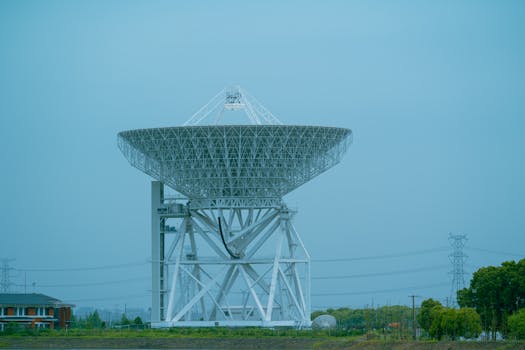Exploring the History of Satellite Development and Key Milestones – Satellite
The history of satellite development is a rich and fascinating field that has revolutionized the way we communicate, navigate, and understand our planet. From the early beginnings of space exploration to the modern-day marvels of satellite technology, this article will delve into the key milestones that have shaped the industry.

Introduction to Satellite Development – Satellite
Satellite development has come a long way since the launch of the first artificial satellite, Sputnik 1, in 1957. The word ‘satellite’ is derived from the Latin term ‘satelles,’ meaning ‘attendant’ or ‘guardian.’ Over the years, satellites have evolved from simple objects that could transmit basic signals to complex systems that can facilitate global communication, navigation, weather forecasting, and Earth observation. The focus keyword Satellite is crucial in understanding the history and development of these space-based systems.
The concept of satellite development was first proposed by scientist and engineer Konstantin Tsiolkovsky in the late 19th century. However, it wasn’t until the mid-20th century that the technology became a reality. The Soviet Union’s launch of Sputnik 1 marked the beginning of the space age and paved the way for future satellite development. The United States soon followed with the launch of Explorer 1 in 1958, which discovered the Van Allen radiation belts and opened up new avenues for space research.
Early Years of Satellite Development
The early years of satellite development were marked by a series of significant milestones. The launch of Telstar 1 in 1962 revolutionized global communication by enabling the transmission of television signals across the Atlantic Ocean. The first geosynchronous satellite, Syncom 2, was launched in 1963 and demonstrated the feasibility of using satellites for continuous communication and navigation. The Soviet Union’s Luna program also made significant contributions to satellite development, with the successful impact of Luna 2 on the Moon’s surface in 1959 and the first soft landing of Luna 9 in 1966.
The development of satellite technology was not limited to government agencies and space organizations. Private companies like Hughes Aircraft and RCA also played a crucial role in advancing satellite capabilities. The launch of the first commercial communications satellite, Intelsat 1, in 1965 marked the beginning of a new era in satellite development. Intelsat 1 provided transatlantic telephone and television services, connecting the world like never before.
Modern Satellite Development and Key Milestones
Modern satellite development has been characterized by significant advancements in technology and the expansion of satellite applications. The launch of the Global Positioning System (GPS) in 1978 revolutionized navigation and has become an essential tool for various industries, including aviation, maritime, and agriculture. The development of satellite-based Earth observation systems has enabled scientists to monitor climate change, track natural disasters, and predict weather patterns.
The introduction of satellite constellations like Iridium and Globalstar has enabled global communication and connectivity, even in remote and underserved areas. The launch of high-throughput satellites like ViaSat-1 and Intelsat 29e has provided fast and reliable internet services, bridging the digital divide and connecting communities worldwide. The use of satellite technology has also become crucial in disaster response and recovery efforts, providing critical communication and navigation services during times of crisis.
Conclusion
In conclusion, the history of satellite development is a testament to human ingenuity and the relentless pursuit of innovation. From the early beginnings of space exploration to the modern-day marvels of satellite technology, the industry has come a long way. The focus keyword Satellite has been at the center of this journey, driving advancements in technology and transforming the way we live, work, and communicate. As we look to the future, it is clear that satellite development will continue to play a vital role in shaping our world and addressing the complex challenges we face.